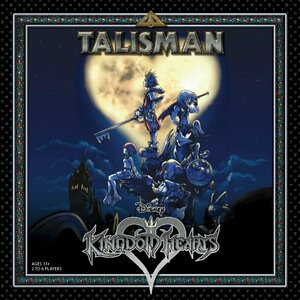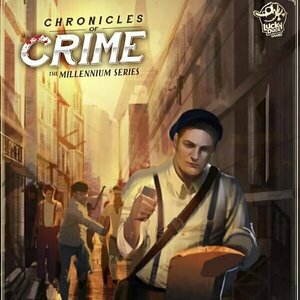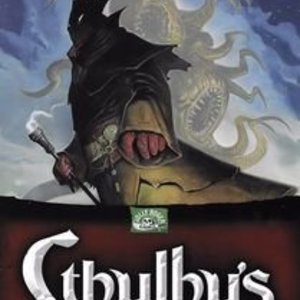Purple Phoenix Games (2266 KP) rated Talisman: Kingdom Hearts in Tabletop Games
Dec 10, 2020
In Talisman Kingdom Hearts (which I will now call simply Talisman for this review) players will be taking on roles of Kingdom Hearts characters to traverse the world with the ultimate goal of reaching the Door to Darkness and sealing it forever. The player who seals the Door ends the game, but it does not necessarily mean they will win this semi-cooperative-but-mostly-competitive roll-and-move game.
DISCLAIMER: We were provided a copy of this game for the purposes of this review. This is a retail copy of the game, so what you see in these photos is exactly what would be received in your box. I do not intend to cover every single rule included in the rulebook, but will describe the overall game flow and major rule set so that our readers may get a sense of how the game plays. For more in depth rules, you may purchase a copy online or from your FLGS. -T
To setup, follow the instructions in the rulebook. Each player will either be dealt a character at random or may choose from the 11 characters in the box. The gigantic board goes wherever it will fit on the table, and the decks of cards are to be shuffled and stacked nearby. The Object cards will be separated by type and placed face-up near the face-up pile of Keyblade cards. Players will adjust their Stat Dials to match the starting stats printed on their character card and the game is ready to begin!
Talisman is a game played over a series of many very quick turns. Each turn is comprised of two phases: Movement and Encounters. During the Movement phase within the Outer and Middle Regions the active player will roll 1d6 and decide to move clockwise or counter-clockwise that many spaces around the board. Once within the Inner Region players will move one space at a time and no longer need to roll. Once a player lands on a space they will have Encounters while stopping.
Encounters on a space may involve several cards in play. Spaces on the board will have written instructions or merely iconography to instruct players what to do on each space. If drawing an Adventure Card from the deck, the active player may come across enemies to fight, followers to recruit, or even items to help in their journeys.
Combat is pretty slick and easy in the game: the player has a base Strength or Magic stat on their dials to which is added the result of a die roll. Compare this to the enemy’s matching base stat plus their roll. The larger result wins the combat. The player takes the enemy card as a trophy when they win, and loses a Health value when they lose and the enemy typically stays on the board space until defeated.
Play continues in this way (with a few more surprises along the way that I will have you play to discover on your own) of taking turns moving and encountering spaces until one player seals the Door to Darkness. Players are then awarded VP for various numbers of cards, where they end up on the board, stat differentials, and other means. The player with the most VP wins the game!
Components. This is a large box and comes with several different types of components. The first is a monstrously-sized game board that takes up a lot of space. That’s not at all bad, but it is certainly a busy board. There is so much information and artwork on the board, and also may have tokens set upon it to be linked to cards on the table. With over 200 cards in the box along with player character cards, stat dials, and 11 plastic minis you get a lot in the box for your money. I would say that all of the components are of excellent quality and I have no qualms with any of them aside from the very large and very busy main board.
I have some good and bad news here. First the bad. This plays somewhat similarly to a game I happen to have very lukewarm feelings for: Jim Henson’s Labyrinth. In both games players are rolling a die and deciding which direction to travel in order to have an encounter on the space. Combat is decided primarily by stats and die rolls with only the Fate tokens in Talisman to assist with a re-roll of one die. Combine that with the frustration of needing to land exactly on a space on the board in order to progress to the next Region inward and players may be volleying themselves back and forth trying to roll just the right number to hop into the Middle or Inner Regions.
That all said, I still do enjoy this game. Yes, I like it because of the art and the theme. I have always said that I prefer my games to have great art and a great theme before I start to care about mechanics and other attributes. This is a case in point. I love the look of the game, the table presence, the Kingdom Hearts IP, and I typically do not gravitate toward roll-and-move games. But, there is enough in Talisman that it keeps me interested in playing more and more. I will eventually be able to play with all of the different characters to experience their own unique special abilities and select a character with whom I most relate. I think I will enjoy that journey.
I can also play this game with my wife pretty readily, and that is a huge positive for me. I know that in time my children will be able to play this game without much arm-twisting as well as we are a huge Disney household. The rules are relatively light, and the rulebook does a great job of breaking everything down. That said, Purple Phoenix Games gives this one a hybridized and limit broken 9 / 12. If you love the Kingdom Hearts IP, or the Talisman games, or even games to introduce to newer players, then you need to take a look at Talisman Kingdom Hearts. I am still discovering things in the game that I hadn’t noticed on previous plays and that keeps me coming back for more. You won’t feel the brain burn here but you will have a great time having Chip ‘n Dale, Dumbo, and Tinkerbell following you along your adventure.

Tutoring: English live lesson
Education and Book
App
Tutoring, awards winning application for online language private lessons! Tutoring provides a...

UBS Mobile Banking
Finance
App
UBS Mobile Banking Do your banking securely and conveniently with a smartphone or tablet –...

Personal Banking
Finance and Productivity
App
If you’re new to our Mobile Banking app and using an iPhone take a look at our tutorial showing...
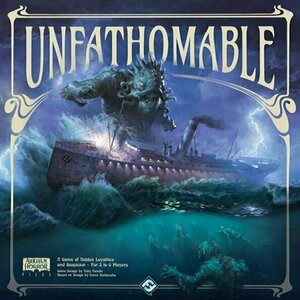
Unfathomable
Tabletop Game
The year is 1913. The steamship SS Atlantica is two days out from port on its voyage across the...
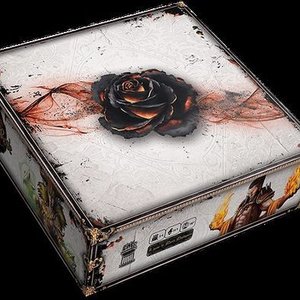
Black Rose Wars
Tabletop Game
Black Rose Wars is a fantasy board game for 2 up to 4 players. Each player becomes a Great...
BoardGames 2018Games
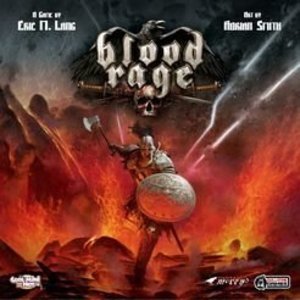
Blood Rage
Tabletop Game
"Life is Battle; Battle is Glory; Glory is ALL" In Blood Rage, each player controls their own...
Miniatures BoardGameGeekGreatness
Purple Phoenix Games (2266 KP) rated Chronicles of Crime: 1900 in Tabletop Games
Apr 23, 2021
If you have been following us for a while now you have probably noticed we have published another title from the Millennium Series – Chronicles of Crime: 1400. While that title takes place in the year, well, 1400, this new title is set 500 years later in Paris. How do these games compare? What about the link to the original Chronicles of Crime (review to be posted later)? Should one purchase copies of all Chronicles of Crime games?
Chronicles of Crime: 1900 (which I shall refer to as CoC1900 from here) is a cooperative campaign, deduction, storytelling, puzzle solving adventure game, but I prefer to play it, and its relatives, solo. In it, the player(s) take control of the journalist Victor Lavel, a descendent of the main character from CoC1400. Victor has a limited amount of time to complete his investigation and return the scoop to the local newspaper by which he is employed. Players will be tackling the investigations of our noble hero in attempts to solve the case that is presented.
DISCLAIMER: We were provided a copy of this game for the purposes of this review. This is a retail copy of the game, so what you see in these photos is exactly what would be received in your box. I do not intend to cover every single rule included in the rulebook, but will describe the overall game flow and major rule set so that our readers may get a sense of how the game plays. For more in depth rules, you may purchase a copy online or from your FLGS. -T
To setup, place the main card holder board on the table. Anywhere. I called it. Next, keep the card decks in order (or don’t) and place them near the board. Similarly, place the location boards on the table and ready the main newspaper board for play. Launch the Chronicles of Crime app on a device, choose 1900, and select the scenario you wish to play. The app will drive the remainder of the game, so hold onto your butts!
How do I explain this game succinctly? Well, each of the cases will involve players traveling to different Location Boards and meeting Characters at these locations. Many cases will be involving several Special Items and, new for the 1900 version, Puzzle Cards that players will need to solve or use in special ways in order to progress with certain leads. These Puzzle Cards do not really give the story away or anything, but are merely tools to be used to help solve the cases.
By using the app and scanning the QR codes on the boards and cards players will be learning about the case, viewing the scene of the crime(s), inspecting items, and chatting up locals for information. Play will continue not so much in “rounds” but until the players have enough evidence and a good handle on the situation enough to return to the paper’s office to report to their coworkers all the details of the crime(s) by scanning answers to their questions about the case. The app then assesses the accuracy of the answers and outputs a score. Based on the score achieved players can play again to pick up clues they missed along the way or try another scenario entirely.
Components. As with all CoC games I have played, the components are simply wonderful. Most of what is in the box is cardstock of varying thickness, but the art is what really stands out. This is a gorgeous game and when it is displayed on the table, people become fascinated by its presence. Then when the onlookers see an app driving the gameplay they are hooked. I have heard complaints from other reviewers that the Character cards in the game are lacking in variation, and I would have to agree. Yes, it is set in 1900 Paris, but all the Character cards feature white people, most of whom seem to be upper crust, and with most of the males sporting an awful mustache. So I get that complaint and agree. With inclusivity and diversity being major hot issues currently, you would expect to see more of it in our industry. I would have liked to have come across more diverse characters, and maybe a mini expansion can add many alternate art characters to the game.
All in all I loved this theme of Chronicles of Crime. Being set in Paris and following a young investigative journalist is a nice twist on the protagonists commonly featured in these games. The gameplay is the same as previous versions of CoC, save for the new Puzzle cards. I do enjoy their addition, and look to find more of these in future versions. I love the Chronicles of Crime system so I was bound to love this one as well.
Now, should you buy this version if you already have base Chronicles of Crime? Sure! Why? I like this one because it adds a different mechanic to the game with all-new scenarios, and I enjoy having more of a good thing. I think I personally prefer the theme in 1400 more, but 1900 is a great addition to the family. If you are someone who has and enjoys the base CoC, or any of its iterations, and are looking for more content to devour, then definitely grab a copy of 1900. If you are new to the system, I say go ahead and start with 1900. The Puzzle cards do not add enough complexity to take it out of reach for beginner gamers or those who enjoy lighter games, but certainly add a new and welcome layer to the series. Purple Phoenix Games certainly recommends this one to all our fans. Can’t get enough Chronicles of Crime? Grab 1900. Want to start in the series but London or Medieval times don’t do it for you? Grab 1900. Like tons of portraits of mustachioed white dudes and floofy ladies? Grab 1900. Whatever your motivation, play the game and let me know how you score. I am not advertising my first score here because I am mortified by my performance. (I did get better on subsequent plays.)
Purple Phoenix Games (2266 KP) rated Cthulhu's Vault in Tabletop Games
Nov 9, 2021
Cthulhu’s Vault is a card game in which players are working together to craft an occult story, which will ultimately lead to a final battle with one of the Ancient Ones. To setup the game, each player receives an Ancient One card (kept face-down), 7 Story cards, and 2 Power tokens (one Investigator and one Cultist). Power tokens are kept face-down and are secret from other players. The remaining Power tokens are placed into two pools – either face-up or face-down as described in the rules – and a starting Story card is drawn and placed in the middle of the play area. The Power Guide card is placed off to the side, visible to players, and shows the amount of Cultist Power necessary to awaken your Ancient One during play. Select a starting player, and the game is ready to begin!
The game is broken down into two phases: the Mystery Stage and the Epic Battle Stage. The Mystery Stage begins the game, and consists of the storytelling element. On your turn, you will select a Story card from your hand and play it to the table. Here’s the catch – all players are trying to create a cohesive storyline, so you are encouraged to narrate and chain together a single story with the addition of each new Story card. After you play your Story card and tell your brief addition to the tale, you will collect a number of Power tokens as described on your played Story card, receiving Bonus tokens if applicable. The Mystery Stage continues in this fashion until a player has acquired the requisite number of Cultist Power tokens necessary to awaken their Ancient One. At the start of that turn, the player will reveal their Ancient One, and the Mystery Stage ends immediately.
Moving on to the Epic Battle Stage, there is a small bit of setup. All remaining Story cards are discarded, and Investigator cards are displayed. The player who awoke their Ancient One collects a number of Power tokens equal to the health of their creature, gathers/shuffles the Ancient One Combat Deck, and draws a hand of 3 Combat cards. All remaining players will select an Investigator to play, in order, depending on the total number of Investigator Power tokens gained during the Mystery Stage. Players will discard down to/collect a number of Power tokens to match the health of their Investigator, shuffle the Investigator Combat Deck, and draw a number of cards as dictated by their Investigator card. A Battle Order deck is created and shuffled, and will dictate the order of actions during each Epic Battle turn. The Epic Battle Stage is now ready to begin.
During the Epic Battle, a card from the Battle Order deck is revealed – either an Investigator or the Ancient One. The corresponding player will then act, playing a card from their hand, performing the action (usually Wounding the opponent), and then drawing back up to their hand limit. Play continues in this way until either the Ancient One is defeated (all Health depleted), or all the Investigators are devoured by the Ancient One. If the Ancient One is defeated, the Investigators have won! And if the Ancient One has eliminated all the Investigators, then that player wins. Either way, whomever wins is encouraged to come up with a brief epilogue to bring the overall story to an end.
So all in all, how does Cthulhu’s Vault fare? Honestly, not too great. Let’s start with the rulebook. It has some areas of serious ambiguity and confusion, which made this game kind of tough and frustrating for me to learn at first. Now that I think I’ve got it figured out, it’s ok, but that first read-through was rough. Now getting down to the actual gameplay. I can appreciate what the game is trying to do – have players create a story and then engage in their narrated battle – but the two phases of the game seem very disjointed to me. It kind of feels like you are playing 2 separate games in one. You get to have some creative fun making up a spooky story, which is then swiftly forgotten as combat ensues. There is little to no connection between the two phases, and that lack of connection makes the storytelling phase seem obsolete.
Another thing to consider when checking this game out is the group of people with whom you will play. To really get a fun, immersive story going, all players need to be willing to embrace the storytelling aspect, and get into the narrative. Requiring that type of creativity on the spot can make some players uncomfortable, and they just might not enjoy that element of the game. Let’s touch on components for a minute. I think that for the most part, the production quality is fine! The Story, Investigator, and Ancient One cards are all oversized, sturdy, and feature some neat spooky art and flavor text. The Combat cards are normal sized, and for the most part clear in their text/actions. The Power tokens are small wooden discs, and are fun to play with. The version I have is in a tin, not a cardboard box, and the tin is nice and sturdy too. Overall, good quality game.
In theory, I think Cthulhu’s Vault is a neat game. The actual execution of the gameplay doesn’t quite hit the mark for me though. The lack of connection between the two phases of the game really detracts from the overall immersion. If there were a stronger connection, perhaps I would like it more, but as it stands, it just feels like 2 separate games in one box. If you’re into storytelling games, I would consider Cthulhu’s Vault because it does provide a neat opportunity for players to craft a unified story. But the shift to the combat phase feels sudden and unrelated. Purple Phoenix Games gives this one a fiendish 5 / 12.
